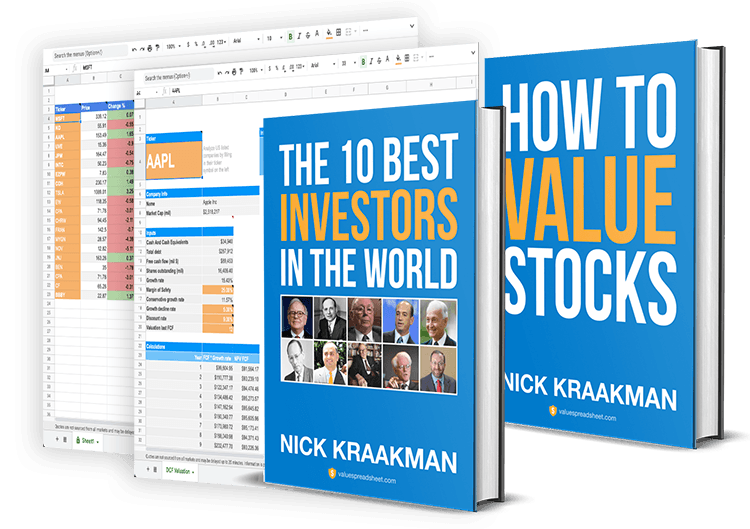
These valuable techniques allow you to identify the next Enron, as well as the growth stories of the next decade. Sounds too good to be true? That's what I thought. I was wrong.
Benjamin Graham, the father of value investing, held the opinion that a "cautiously greedy" investment strategy gives you the best chance of achieving above average returns on the stock market. In his legendary book The Intelligent Investor, Graham explains that the chief aim of a cautious investor is to "avoid committing serious mistakes or losses," while the primary objective of the greedy investor is to invest in stocks which "are both sound and more attractive than the average." The combination of these two types creates the basis of successful investing.
"Rule No.1 is never lose money. Rule No.2 is never forget rule number one."
Warren Buffett
As a serious investor, you look at a company's financial statements. Here you determine that the company has little debt and is highly profitable compared to its competitors. You estimate the intrinsic value and find out that the company is currently severely undervalued. You invest in this seemingly amazing company, but a few months later the company files for bankruptcy. What happened?! Well, unfortunately being cautiously greedy in itself is no guarantee for good results. Your strategy is based on the reported financial statements, which are highly susceptible to manipulation.
This means that a company might seem to post strong earnings figures, while in fact it is bleeding money. In his enlightening book It's Earnings That Count, Hewitt Heiserman explains that the reported income statement has four significant limitations which allow for shady earnings "management".
- Investments in Property, Plant & Equipment are depreciated over time
- Year-to-year in changes in working capital are not accounted for on the income statement
- Investments in R&D and advertising, which pay off over time, are immediately expensed
- Stockholders' equity is considered free, while there are opportunity costs to using it
If the above four points are too technical for you, I suggest you read the book. It is earnings manipulation which creates many of the so called value traps on the market. Therefore, the importance of detecting this type of manipulation cannot be overstated. The garbage-in, garbage-out principle applies in this situation. Because no matter how sophisticated your fundamental analysis and intrinsic value estimates are, if they are based on misstated figures they are essentially worthless.
Do not despair, for help is nigh
Fortunately, Heiserman offers an ingenious solution to the limitations of reported income statements: build two alternative income statements! The first one, the Defensive income statement, allows you to determine if a company is able to self-fund its growth or if it heavily relies on external funding. The second one, the Enterprising income statement, gives you better insights into a company's ability to create value. The book offers examples of WorldCom and Enron from the years prior to their demise. It appears that both firms show both defensive and enterprising losses, while their reported earnings are growing. With this knowledge, you could have foreseen the imminent downfall and avoided these stocks altogether.

The process of creating these alternative income statements is too long to describe in this blog post. However, the book also offers 30-second versions. While they are less accurate, they can still help you avoid making costly mistakes.
Simple defensive profits = cash from operating activities - capital expenditures
Simple enterprising profits = EBIT / (total debt + total equity)
If defensive profits are positive, this means that the company is able to self-fund its growth. If enterprising profits are above 18%, there is a high probability that the firm is creating value. These are the characteristics of stocks which will outperform the market in the long run, especially if these figures are increasing over time. Heiserman suggests to look at three years of earnings to be able to make an informed judgment.
Conclusion
The first step in any successful investment strategy should be to determine whether reported earnings are trustworthy. This will guard you from investing in the next Enron, while at the same time allowing you to spot the new growth story. If you want to know all the details, you can check out the book on Amazon.
I interviewed Hewitt Heiserman, author of It's Earnings That Count, for my Money Tree Investing Podcast. Click here to listen to the interview.



